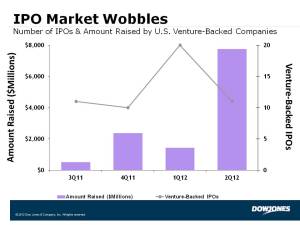
You may have heard recently that Amazon is pulling back a bit on hiring and warehouse space. With all their vast resources in strategic planning, the executive team there overshot on leasing square feet their forecasts no longer support. I suspect they will manage through this just fine in the long run with little impact on earnings, but it is a powerful reminder of how difficult it is to predict future business both when you’re in an up-market and a down one.
We all get this wrong now and again. It’s normal and usually navigable. The problems come when balancing present challenges heavily compromises a company’s future, or betting only on the future sours a company’s current performance to the point where no one cares about the future.
I am often humbled by the nagging paradox of making tough business decisions every day at the relentless pace of 24x7x365. Running a company in response to everyday circumstances in the present will always be difficult, Running a company for an opaque future will always be daunting.
We have to do both well to accomplish our current goals and set the table for the next generation of growth prospects. Favor either the present or the future too heavily and the question becomes whether you want to lose now or later. While that’s not an option any leader wants to consider, if we don’t see the delicacy in how one affects the other, our intentions can be undermined by our outcomes.
We often hear about the pressures of being a public company, how corporate leaders make choices to focus on quarterly earnings from which they financially benefit immediately over building strong companies for the long haul. I do think this happens at some companies where short-term stock performance can dramatically impact executive compensation. Too often those companies fall prey to what Clayton Christensen famously has called The Innovator’s Dilemma and allow their long-established norms of success to be fully disrupted by more nimble competitors.
There’s a more ironic take on this notion, where equity markets sometimes forgive emerging companies for failing to produce earnings at all in the near term in the hope that someday they will have gained so much market share that they will prove invincible. This all-or-nothing strategy has paid off handsomely for companies like Amazon that didn’t produce earnings for years, reinvested heavily in their growth, and today reap the benefits of that bet. Sadly, this example has been exploited by too many newly public companies that don’t even consider near-term profitability a goal, allowing lazy business models to overshadow unfounded optimism that someday their customers will reward them with enviable positions.
A company that bets only on the future, never becomes economically successful, and runs out of cash can be train-wrecked just as decisively as a once successful company that fails to address The Innovator’s Dilemma. If the executives steering either of those failures happen to be selling shares along the way to a company’s demise, a feast of lawyers will follow.
Inflation and rising interest rates make the cost of doing business higher for everyone. We painstakingly decide how much of these costs we pass along to customers and how much we absorb. The benefit of preserving current operating margins is always tempting, but the rewards of long-term customer loyalty and lifetime value speak for themselves. How do we decipher the balance between current and future financial results? Data will often shine a light on the path, but there are no conclusive textbooks with clear answers to these calculations.
It truly is hard to run a company both for today and tomorrow. We have to consider the staff sizes we need, the leases we’ll require, the stability of our supply chains, price elasticity, and the promise of our brands. We also carefully must watch cash flow, our balance sheets, compensation, incentives, technology advancements, and investments in future product cycles. What works today may or may not work tomorrow. It is seldom that what works perfectly in one set of conditions works just as well in another.
There are no perfect answers, but the fluidity of making a decision now for its short and long-term impact usually weighs heavily on those who wrestle with the impossible crystal ball.
Covid-19 has been a good reminder of how difficult and daunting decisions can be. We were all blind during Covid and it was easy to misread fluctuating data. No leader had substantial experience with stay-at-home working conditions. No one knew how long the pandemic would last, how it would impact supply and demand, or how it would impact investor sentiment. If that wasn’t enough of a challenge, most of what we thought going into Covid proved to be wrong, and most of our assumptions about how employees, customers, and investors would behave post-Covid have been equally wrong.
If you want to be humbled, try making decisions that address the unknown with this level of frequency. You’ll likely realize you’re wrong more than you’re right, but the less tangible skill we develop is how to rethink and react quickly when we discover we are wrong. That’s why the rewards for creating a company that is “built to last” are immense, but the odds of lasting fifty years are long.
When it comes time to decide short or long, know you have to do both, and do your best you to keep dialogue and debate flowing among diverse opinions. The decisions we make have an impact we might be able to see today, but unless you know someone who has a gift the world has never seen, we are almost always speculating on the impact a year or more from today. Sometimes it’s decades before we find out if we were right or wrong.
We choose to sign up for the difficult and the daunting. The longer I do this, the more humbling it is.
_______________
Photo: Pixabay



